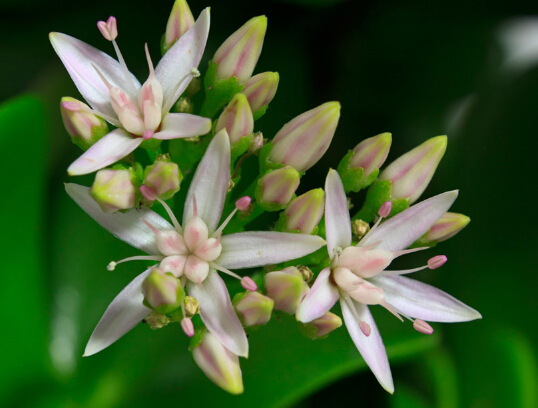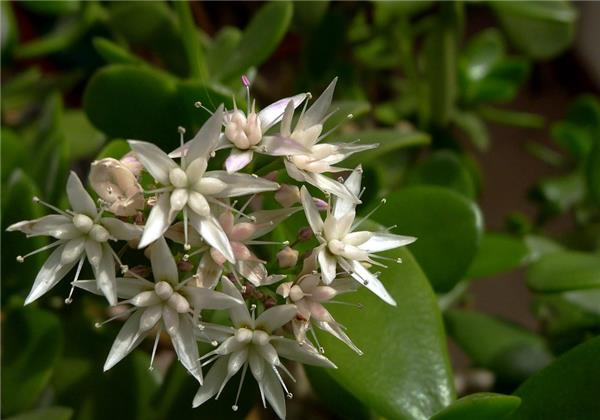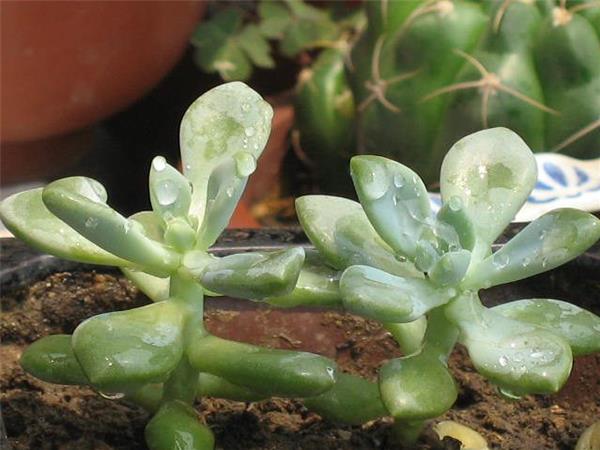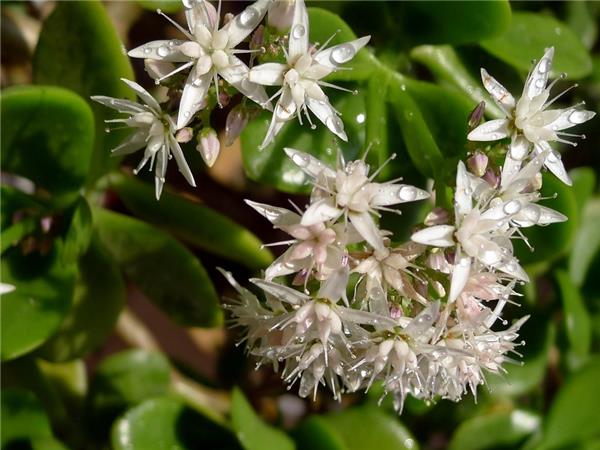How do you cultivate the flowers of Yushu?
Yushu flower represents pure love, which also fits its own image. Green leaves and white flowers can give people a sense of freshness and purity and make people feel fresh and fresh in the hot summer.

I. introduction of Yushu flowers
Morphological features: Yushu flower is an evergreen shrub. Plant height 1-3 m, stem fleshy, much branched. Flowers 2 mm in diameter, white or pale pink.
Ornamental application: thick branches and leaves, green four seasons, peculiar leaf shape, solemn plant shape, easy cultivation and simple management. Suitable for potted plants, can be displayed on the balcony or embellished on the indoor table, appears to be very elegant and elegant. The crown is straight and beautiful, the stems and leaves are green, and the terminal white flowers are very elegant and chic. If equipped with pots, gravel processing into a small bonsai, Yushu flowers should be potted, can also be cultivated into the posture of ancient trees and old piles, decorating tea tables and desks are more attractive.

Second, the culture method of Yushu flower
Growth habits: Yushu flower is Yushu, not just the flowers of Yushu. Yushu's growth habit is to like the warm, dry, sunny natural environment. Yushu flower is afraid of strong light, slightly shade-tolerant, not cold-resistant, and the winter temperature should not be lower than 7 ℃. It is better to grow in a fertile sandy loam with good drainage.
Pot soil configuration: the Yushu flower should choose the rotten leaf soil of 2 to 3 and the garden soil of 1 to 3 and add a small amount of river sand as the culture soil, and the basin bottom can put a little long-acting fertilizer such as hooves as base fertilizer. In order to facilitate drainage, the bottom of the basin should also be covered with some gravel or tiles. From spring to autumn, can be watered once every two days, avoid stagnant water in the basin.
Propagation method: the control method of Yushu is often carried out by the method of bark insertion. In the growing season of Yushu, the thick apical branches with a length of 8-10cm were cut, dried slightly and inserted into potted soil to take root for about 3 weeks.
Light and temperature control: spring and autumn are the suitable growth periods for Yushu, and the optimum growth temperature is 20-30 ℃. Shade should be carried out when it is hot in summer to avoid direct sunlight. The growth is slow when the temperature is over 38 ℃. Keep it indoors in a sunny place in winter and keep it at room temperature of 7-10 ℃. If the temperature is below 0 ℃, it will freeze to death.

Water and fertilizer management: during the growing period, Yushu is watered every 2-3 days, but can not accumulate water. When it is hot in summer, watering should be strictly controlled and ventilation should be strengthened, otherwise it is easy to cause fallen leaves. Watering decreases gradually after the beginning of autumn. Outdoor cultivation, to avoid torrential rain, otherwise too much water in the roots, it is easy to cause rotten root death. Watering should be reduced in winter, and the basin soil should be slightly dry. Topdressing fertilizer should be applied during the growing period, generally applying rotten thin cake liquid fertilizer 2-3 times a month. In order to keep the plant shape of Yushu plump, fat and water should not be too large, so as not to cause overgrowth.
When changing pots or putting rooms in autumn every year, attention should be paid to shaping and pruning to make the plant shape more simple and elegant.
Pest control: the main diseases and insect pests in Yushu are leaf spot, anthracnose, shell insects, brown soft scale and so on. It can be sprayed with 1000 times of methyl topiramate wettable powder. The indoor ventilation is poor, and the stems and leaves are vulnerable to shell insects. They are sprayed with 1000 times of omethoate emulsion.

Yushu flowers can be used for bonsai production, potted culture, can also be used to decorate the courtyard, decorate the terrace and so on, can play a role in beautifying the home and adjusting the indoor life.
Related
- Wuhan Hospital Iron Tree Blooming Result Was Instantly Frightened by the Gardener Master
- Which variety of camellia is the most fragrant and best? Which one do you like best?
- What is the small blue coat, the breeding methods and matters needing attention of the succulent plant
- Dormancy time and maintenance management of succulent plants during dormancy
- Minas succulent how to raise, Minas succulent plant pictures
- What are the varieties of winter succulent plants
- How to raise succulent plants in twelve rolls? let's take a look at some experience of breeding twelve rolls.
- Attention should be paid to water control for succulent plants during dormant period (winter and summer)
- Watering experience of twelve rolls of succulent plants
- Techniques for fertilizing succulent plants. An article will let you know how to fertilize succulent plants.



